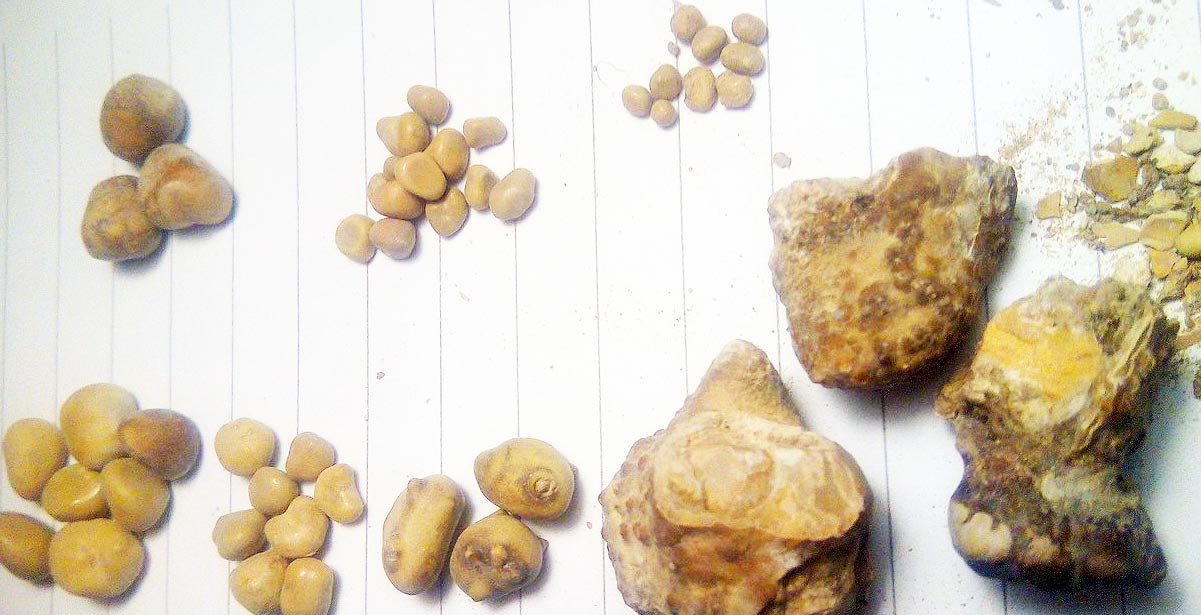 Ureteric calculi are painful, more common in our hot climate, and mostly idiopathic. Some calculi require referral, most require analgesia and time.
Ureteric calculi are painful, more common in our hot climate, and mostly idiopathic. Some calculi require referral, most require analgesia and time.

Records of human kidney stones go back as far as ancient Egypt, over 7,000 years ago. Today, ureteric colic is one of the most common disorders of the urinary tract, with an increasing incidence thanks to changes in dietary and lifestyle habits over the last 50 years; one major factor is increasing Western society caloric intake, obesity and a tendency (in the heat of Australia especially) to dehydration due to inadequate fluid intake. Symptomatic stone disease often presents to ED’s.
Most kidney stones pass out of the body without any intervention. Stones that cause ongoing symptoms or complications are often treated, usually without major surgery.
Treatment is divided into two phases, initial management and definitive (surgical) treatment.
The algorithm below is a useful initial management protocol. The colic sufferer is easily recognised – pacing in the waiting room, moving restlessly from seat to water fountain and toilet, sweating, green with nausea, asking, “How much longer until the doctor’s free?”
Straining the urine to obtain a stone for analysis is useful to ascertain if specific medical therapy is indicated e.g. treating hyperuricosuria with allopurinol to reduce serum urate levels. Conditions like hypercalcaemia or renal tubular acidosis (RTA) are quite uncommon. Cystine stones are rare.
In recurrent stone formers, metabolic stone studies measuring serum levels and 24 hour urine production and solute excretion can be helpful but need to be done after initial episode has passed.
Radio-opaque stones are generally calcium-based and do not respond to dissolution therapies. CT is quite good at determining the calcium content of stones (Hounsfield Units).
Stones seen clearly on plain x-ray may be suitable for Extracorporeal Shock Wave Lithotripsy (ESWL). This is still available in WA as a mobile service with a transportable lithotripter that can be brought into operating theatres as required. It is generally more useful for renal rather than ureteric stones (with higher clearance rates).
Common pitfalls
Over-investigation is common. That is, most causes are idiopathic. Markers of inflammatory response, an MSU to exclude urease-producing species such as Proteus, Brucella, Klebsiella and assessment of renal function are usually all that is required. If clinical history is suggestive then biochemical assessment of Ca and s.Urate levels can be considered but is not critical in the initial phase unless suspecting hypercalcaemia due to malignancy or hyperparathyroidism (stones, bones, groans and moans).
One common myth is that increasing fluid intake will result in more rapid passage of a ureteric stone. Once a stone is impacted in the ureter, renal blood flow and filtration/urine production falls and peristalsis diminishes. Increasing water intake simply induces a diuresis via the unobstructed contralateral kidney – resulting in a very full bladder!
Another pitfall is persisting with analgesia for ureteric colic, that is ineffective. Initially, with severe pain, the use of opioid-based medication is reasonable in conjunction with Tramadol™ and NSAIDs. Beyond the initial presentation, opioids become less effective and increasing doses of paracetamol/codeine may simply lead to constipation without adequate pain relief.
Stones greater than 5mm diameter, more than 5cm from the bladder and symptoms persisting for more than 5 days, usually mandate intervention. Renal damage is unusual in the absence of infection even with persistent obstruction.
Author competing interests statement: nil relevant. Questions? Contact the editor.
Disclaimer: Please note, this website is not a substitute for independent professional advice. Nothing contained in this website is intended to be used as medical advice and it is not intended to be used to diagnose, treat, cure or prevent any disease, nor should it be used for therapeutic purposes or as a substitute for your own health professional’s advice. Opinions expressed at this website do not necessarily reflect those of Medical Forum magazine. Medical Forum makes no warranties about any of the content of this website, nor any representations or undertakings about any content of any other website referred to, or accessible, through this website.


